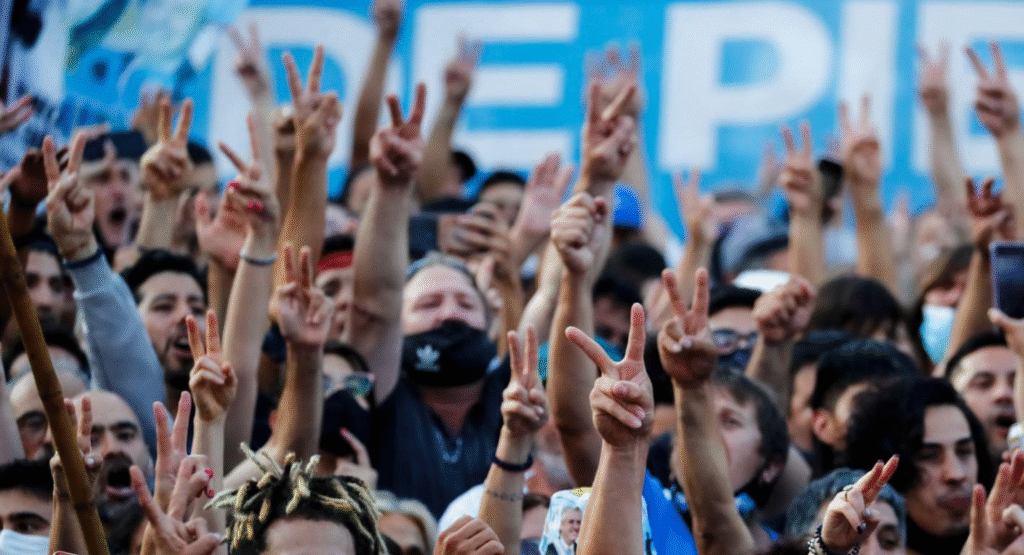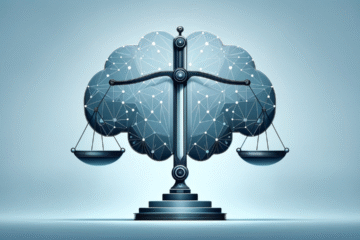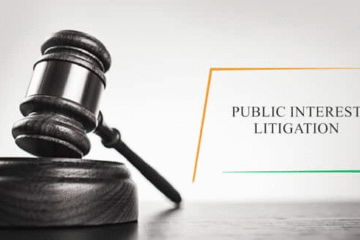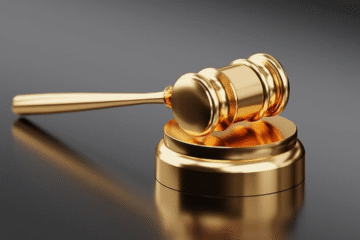
This article is written by Sukhmandeep Kaur of Lovely Professional University, Phagwara, an intern under Legal Vidhiya
Abstract
Hate speech during political campaigns has become a growing concern in democratic societies across the world. While freedom of speech is a fundamental right enshrined in many constitutions, including that of India, it is not an absolute right. When political speech turns into hate speech, it poses a direct threat to social harmony, minority rights, and the very foundations of democracy. This paper explores the nature and impact of hate speech in electoral campaigns, analyzes the constitutional limits placed on speech, examines key judicial interpretations, and suggests reforms to strike a balance between free political expression and protection from hate-driven narratives.
Keywords
Hate Speech, Election Campaigns, Freedom of Speech, Constitutional Limits, Public Order, Article 19(1)(a), Representation of the People Act, Election Commission of India, Political Discourse, Reasonable Restrictions
Introduction
Elections form the backbone of any democracy. Campaigns offer a vital space for candidates and parties to communicate their vision, debate ideas, and mobilize voters. However, in recent years, political discourse has been increasingly marred by vitriolic rhetoric, personal attacks, and targeted hate speech aimed at specific communities. Hate speech in campaigns not only violates legal norms but also fosters divisiveness, fear, and alienation among citizens.
India, as the world’s largest democracy, is no stranger to this phenomenon. The Indian Constitution guarantees freedom of speech and expression under Article 19(1)(a), but this right is subject to reasonable restrictions, especially when speech affects public order, decency, morality, or the sovereignty and integrity of the nation. [1]This article delves into how hate speech functions during campaigns, the extent to which it is legally regulated, and the tension between freedom of speech and the need to maintain communal harmony.
Understanding Hate Speech
Definition and Scope
There is no universally accepted definition of hate speech. Broadly, hate speech can be described as any speech, gesture, conduct, writing, or display that incites violence or prejudicial action against a person or group based on their race, religion, ethnicity, sexual orientation, disability, or other identity factors.[2]
In the context of campaigns, hate speech may take the form of:
- Communal or caste-based slurs
- Dehumanizing language against minorities
- Incitement to violence or discrimination
- False propaganda intended to inflame public emotions
Characteristics in Campaigns
- Targeted Rhetoric: Often aimed at religious, caste, or ethnic minorities.
- Identity Politics: Used to mobilize votes along communal lines.
- Scapegoating: Blaming marginalized communities for societal problems.
- Dog Whistle Politics: Using coded language to stir up hatred without overtly violating legal boundaries.[3]
Legal Framework Governing Hate Speech in India
1. Constitutional Provisions
Article 19(1)(a): Grants all citizens the right to freedom of speech and expression.
Article 19(2): Allows the State to impose “reasonable restrictions” on this right in the interests of:
- The sovereignty and integrity of India
- The security of the State
- Friendly relations with foreign states
- Public order
- Decency or morality
- Contempt of court
- Defamation
- Incitement to an offence[4]
This means hate speech can be legally restricted under grounds like public order, decency, and incitement to violence.
2. Statutory Provisions
- Section 153A IPC: Penalizes promoting enmity between different groups on grounds of religion, race, etc., and doing acts prejudicial to maintenance of harmony.
- Section 295A IPC: Punishes deliberate and malicious acts intended to outrage religious feelings.[5]
- Section 505 IPC: Addresses statements creating or promoting enmity, hatred, or ill-will between classes.
- Representation of the People Act, 1951 (RPA):
- Section 123(3): Deems appeals to vote (or not vote) on the grounds of religion, race, caste, community, or language as corrupt practices.
- Section 125: Penalizes promoting enmity in connection with elections.[6]
These provisions provide mechanisms to check inflammatory speech during electoral campaigns.
Judicial Approach to Hate Speech
1. Supreme Court Judgments
Pravasi Bhalai Sangathan v. Union of India (2014)
- The Court acknowledged the growing threat of hate speech but refused to frame new guidelines, citing existing laws.
- Held that unless speech incites violence or public disorder, it may not be criminally punishable.[7]
Abhiram Singh v. C.D. Commachen (2017)
- The Court expanded the interpretation of Section 123(3) of RPA.
- Held that seeking votes in the name of religion, race, caste, or language — whether of the candidate, voter, or any other person — is illegal.[8]
Shreya Singhal v. Union of India (2015)
- While striking down Section 66A of the IT Act, the Court clarified that mere “discussion” or “advocacy” is protected under free speech, but “incitement” is punishable.[9]
Hate Speech in Practice: Political Campaign Examples
1. 2014 and 2019 General Elections
- Campaigns witnessed numerous communal remarks.
- Several FIRs were lodged under IPC and RPA provisions, but convictions were rare.
- Politicians often used “coded language” to avoid legal repercussions while still conveying discriminatory messages.[10]
2. Role of Social Media
- Social media has amplified hate speech.
- Political campaigns now use digital platforms to target specific voter groups through algorithms and misinformation.[11]
3. Lack of Accountability
- Candidates are rarely disqualified for hate speech unless the EC takes strong action.
- Hate speech trials are prolonged, leading to ineffective deterrence.[12]
The Role of the Election Commission
The Election Commission of India (ECI) has powers under:
- Article 324 of the Constitution
- Model Code of Conduct (MCC)
Steps Taken by the ECI:
- Issue of notices and warnings to candidates.
- Temporary bans on campaign activities for repeat offenders.
- Advisories to political parties against divisive campaigning.
Limitations:
- MCC is not legally binding.
- ECI lacks enforcement powers to disqualify or prosecute without court involvement.
- Delayed responses and lack of real-time action dilute deterrence.[13]
Challenges in Regulation of Hate Speech in Campaigns
Despite having a legal framework to regulate hate speech in India, enforcement remains weak and inconsistent. Hate speech during political campaigns continues to thrive due to a combination of legal ambiguities, institutional limitations, and political dynamics. The key challenges in regulation are as follows:
1. Vague and Ambiguous Legal Definitions
One of the primary obstacles in regulating hate speech is the lack of a clear, universally accepted definition. Indian laws such as Sections 153A, 295A, and 505 of the IPC, and Sections 123(3) and 125 of the Representation of the People Act, refer to hate speech in terms of promoting enmity, inciting violence, or outraging religious feelings. However, these provisions are broad and open to subjective interpretation. This ambiguity often leads to misuse or underuse of these laws.
Result: Courts and law enforcement agencies struggle to differentiate between legitimate political speech and hate speech, which leads to inconsistent application of the law.[14]
2. Delayed Judicial Process
The Indian judicial system is notorious for its slow pace of trials, especially in cases related to hate speech. By the time a case is resolved, the political objective of the speech — such as electoral gain — has already been achieved. Moreover, very few politicians are convicted, and even fewer are disqualified from contesting elections.
Result: The lack of timely consequences significantly weakens the deterrent effect of hate speech laws.[15]
3. Ineffective Enforcement Mechanisms
Law enforcement agencies are often hesitant or inconsistent in taking action against powerful political figures. FIRs are either not registered, or investigations are delayed under political pressure. The Election Commission of India (ECI), while empowered to monitor electoral conduct, does not have adequate enforcement authority to disqualify or penalize candidates beyond warnings and temporary bans.
Result: Political leaders often exploit this gap to make inflammatory statements with minimal fear of accountability.[16]
4. Selective and Biased Application
There have been instances where hate speech laws are enforced selectively depending on the political alignment of the accused. Opposition leaders are sometimes targeted more aggressively, while ruling party members escape scrutiny. This undermines the neutrality of the legal process and fuels public mistrust in the system.
Result: The law becomes a political tool rather than a neutral instrument of justice.[17]
5. Role of Social Media and Digital Platforms
With the rise of digital campaigning, social media has become a major platform for spreading hate speech quickly and anonymously. Online content is often algorithmically amplified, making it harder to control. Existing laws like the IT Act are not fully equipped to address modern challenges such as bots, fake news, and viral hate messages.
Result: Regulatory authorities face a complex task of identifying, removing, and prosecuting digital hate speech, especially during fast-paced election cycles.[18]
Suggestions for Reforms
To effectively tackle the rising menace of hate speech during political campaigns, India needs comprehensive and multi-dimensional reforms. These reforms must balance the right to free speech with the constitutional duty to maintain public order, communal harmony, and electoral integrity. Below are key suggestions:
1. Clear and Comprehensive Legal Definition of Hate Speech
Currently, Indian laws dealing with hate speech are scattered across various statutes and use vague or overlapping terminology. A well-drafted, standalone legislation defining hate speech specifically in the context of elections is required.[19]
2. Fast-Track Courts for Electoral Hate Speech Cases
Delays in adjudication allow hate speech offenders to reap immediate political benefits without facing timely consequences. To address this:
Proposed Measures:
- Establish special fast-track courts to hear hate speech cases during and immediately after elections.
- Mandate time-bound investigations and trials, especially for candidates contesting elections.
- Introduce preliminary hearings within 15 days of complaint registration to determine prima facie liability.[20]
3. Empowering the Election Commission of India (ECI)
While the ECI monitors campaigns and issues advisories, it lacks binding powers to penalize or disqualify candidates independently.
Proposed Measures:
- Amend the Representation of the People Act to grant the ECI the power to:
- Disqualify or bar candidates involved in hate speech.
- Cancel candidature in severe cases.
- Empower ECI to refer hate speech cases to fast-track courts directly.
- Ensure transparency in ECI’s actions by publishing reports of violations and penalties imposed.[21]
4. Strengthening Social Media Regulation
Digital platforms often serve as unregulated arenas for spreading hate speech during campaigns. The current IT rules focus more on intermediaries rather than content creators or political advertisers.
Proposed Measures:
- Enforce mandatory disclosure of paid political advertisements and content on social media platforms.
- Impose strict timelines for content takedown once flagged as hate speech.
- Establish a joint regulatory mechanism involving the ECI, Ministry of Electronics and IT, and social media companies.
- Hold platforms accountable for algorithmic amplification of hate content during election seasons.[22]
Conclusion
The right to free speech is the lifeblood of democracy. But when speech becomes a weapon to divide, dehumanize, and incite hatred, especially during campaigns, it corrodes the democratic fabric. India’s legal and constitutional framework offers tools to curb hate speech, yet their implementation remains weak and inconsistent. It is imperative that the State, judiciary, media, and civil society work together to establish a culture of respectful political discourse. Only then can electoral campaigns fulfill their true democratic purpose — as forums for vision, debate, and inclusive growth.
References
- The Constitution of India, Ministry of Law and Justice, Government of India.
https://legislative.gov.in/constitution-of-india - Indian Penal Code, 1860, Bare Act – Sections 153A, 295A, and 505.
https://indiacode.nic.in - Representation of the People Act, 1951, Bare Act – Sections 123(3) and 125.
Pravasi Bhalai Sangathan v. Union of India, (2014) 11 SCC 477. - Abhiram Singh v. C.D. Commachen, (2017) 2 SCC 629.
- Shreya Singhal v. Union of India, (2015) 5 SCC 1.
- Election Commission of India, Model Code of Conduct for the Guidance of Political Parties and Candidates, ECI Manual.
Law Commission of India, Report No. 267 – Hate Speech, March 2017.
https://lawcommissionofindia.nic.in/reports/Report267.pdf - Basu, Durga Das. Introduction to the Constitution of India, LexisNexis, 24th Ed., 2020.
- Singh, Mahendra Pal. V.N. Shukla’s Constitution of India, Eastern Book Company, 13th Ed., 2022.
- Bhatia, Gautam. Offend, Shock, or Disturb: Free Speech under the Indian Constitution, Oxford University Press, 2015.
[1] Constitution of India, Article 19(1)(a) and 19(2).
[2] Law Commission of India, 267th Report on Hate Speech, March 2017.
[3] Niraja Gopal Jayal, Citizenship and Its Discontents, Harvard University Press, 2013.
[4] Constitution of India, Article 19(2).
[5] Indian Penal Code, Sections 153A, 295A, and 505.
[6] Representation of the People Act, 1951, Sections 123(3), 125.
[7] Pravasi Bhalai Sangathan v. Union of India, (2014) 11 SCC 477.
[8] Abhiram Singh v. C.D. Commachen, (2017) 2 SCC 629.
[9] Shreya Singhal v. Union of India, (2015) 5 SCC 1.
[10] Association for Democratic Reforms (ADR), Election Watch Report, 2019.
[11] Berkman Klein Center, Harvard University, AI and Hate Speech Monitoring, 2020.
[12] Election Commission of India, Model Code of Conduct Guidelines.
[13] Ibid.
[14] Law Commission Report 267, op. cit.
[15] National Crime Records Bureau (NCRB) 2022 Report on Hate Crimes.
[16] Human Rights Watch, India: Curbing Dissent and Hate Speech Unevenly, 2021.
[17] Ministry of Electronics and IT, IT Rules, 2021.
[18] Press Council of India, Norms of Journalistic Conduct, 2022 Edition.
[19] Law Commission of India, 267th Report on Hate Speech.
[20] Supreme Court suggestion in Pravasi Bhalai Sangathan v. UOI, 2014.
[21] Representation of the People Act (proposed amendments).
[22] Editors Guild of India, Statement on Political Coverage Guidelines, 2020.
Disclaimer: The materials provided herein are intended solely for informational purposes. Accessing or using the site or the materials does not establish an attorney-client relationship. The information presented on this site is not to be construed as legal or professional advice, and it should not be relied upon for such purposes or used as a substitute for advice from a licensed attorney in your state. Additionally, the viewpoint presented by the author is personal.




0 Comments